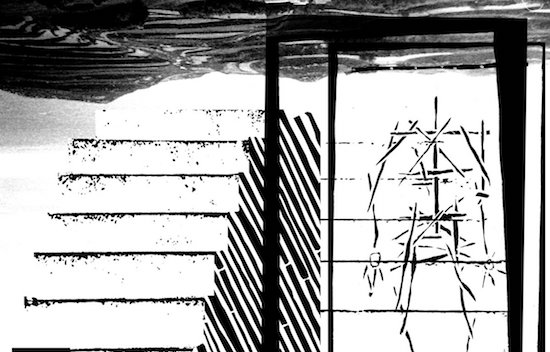Caves hold a raw fascination – for most of us they represent a hunter-gatherer existence, surviving the elements, connected to nature in ways most of us don’t experience. They can also harbour something quite different – moments of artistic endeavour preserved over millennia, the first tangible examples of human creativity. Palaeolithic hand stencils in Indonesia; ibex, cattle and horses in La Pasiega; red ochre figures in the Cave of Beasts in Libya; myriad other works from the palaeolithic to the neolithic: in essence they all tell the same story, of a deep-seated need to relate the lived experience. And while it can be tempting to associate ancient life with an existence of sheer grinding necessity, cave paintings shed light on a whole other sphere of activity not essential to survival – or not in the same way. Colour, shape and form forged in the dank hollows, a shout in the dark.
Indeed, many think sound may also have played an important role in ancient life. Archeoacoustic researchers seek to illuminate previously hidden audio worlds of ritual and transcendence among sacred places, visiting neolithic burial chambers and stone circles, measuring resonance and speculating as to how such spaces may have been engineered or experienced acoustically. Instruments – from the carnyx
to the bone flute to the bamboo pipe – point to a thrilling and dynamic aural past.
This is the beguiling context in which Capitol K – veteran producer Kristian Craig Robinson – sets up stall for his superb new album Goatherder. He deployed a global sound palate on 1999’s Sounds of the Empire for Planet Mu, which bridged restless IDM with organic live instrumentation, and used vocal voyaging amid submerged electronics on 2005’s Notes from Life on the Wire with a Wrecking Ball; now Goatherder takes inspiration from Robinson’s native Malta. It creates a Mediterranean audio mythos – a strange woodblock pound anchored to herbaceous scrubland, myth and legend. If previous albums have displayed a restless and scattershot approach, here the focus is deadly tuned: Goatherder sounds rather like the techno of the ancients, a roughshod sublow odyssey that hums with positive mystic atmosphere.
A quick note on process here, because it was an interesting one. Robinson gathered a selection of bamboo instruments picked up on his global travels before settling on the reeded quecha – a Maltese panpipe – as the lead instrument for Goatherder. Percussive objects including dried fennel stalks are also used, and he cut rudimentary flutes from fresh reeds. Oh, and the record was recorded in a Maltese cave (once, appropriately enough, used as a goat stable). So there we have it. This is an album that bridges the centuries without a trace of simpering worthiness – a gnostic audio feast of giddily spangled portent propelled by frolicking pipes, sublow pressure and raw drum work. The boots may be planted firmly in the Maltese hills, but they’re liberally spattered with London rave juice.
The album opens with quiet tinkling goat bells and the merest hint of breathy intonation from the pipe. A vibe is set in evocation of dust and beating sun and the smell of creaking leather and strong red wine and hunks of freshly baked tal Malti bread. The bells are layered up to a cacophonous crescendo, the pipes hint at a call-and-response motif and the dust settles. ‘Building Fire’ is next, but here the pipes are joined by a great judder of a kick drum rooted by limber subs which – soon enough – drop down into a glorious thrum of bass. This is organic gear focusing on the glorious physicality of wet cave sonics: it speaks of vibration and huge fires, misty mornings and dancing until you can’t feel your own head.
‘Swirling Torrents’ hinges on a queasily unstable four-four-ish thwack at around 110 BPM that sways, staggers and threatens to untether at any moment. The sharp intake of breath as Robinson refuels in-between parps is thrillingly present too. It gives proceedings a lithe physicality. Indeed, it’s curious that while the tempo remains relatively low lit, the drive is palpably propulsive. This is jaw-twitching fire music – chunky and playful and thrillingly human. It will kick on a serious system, for sure, but it doesn’t feel remotely fine- tuned or tethered to clinical representation on a Funktion One. Goatherder is loose and bacchanalian – hypnotic whirly music for the worldwide eternal dance. The pipes – sometimes associated with wafer-thin car advertisement otherment, a sentimental ‘return to innocence’ frippery – are nothing of the sort here. Seldom overbearing, they are at their most effective when deployed with restraint. On ‘Field Walk’, for example – a slab of uplifting rollidge which, strangely, evokes system-rattling jungle in the breakdown, the pipes referencing judiciously placed Reece stabs. Champion sound indeed.
Robinson has created a sound world that feels palpably healing. This is an LP that feels very much needed. An evocation to dance: not into oblivion, but forward to the light.


